| Umělec 2007/3 >> DANIEL RICHTER’S ABSTRACTIONS OF REALITY | Просмотр всех номеров | ||||||||||||
|
|||||||||||||
DANIEL RICHTER’S ABSTRACTIONS OF REALITYUmělec 2007/301.03.2007 Meike Behm | profile | en cs de es |
|||||||||||||
|
At the large solo exhibition of the painter Daniel Richter at the Hamburg Art Centre (Kunsthalle), Meike Behm examines selected abstract and figurative works in search of overarching themes. Strikingly, Richter titles each of his paintings – an indication that his non-graphic works do not exclusively deal with painterly problematics but pursue passions that are comparable to those of the graphic works he produced after the year 2000.
The Hamburg-based 45-year old artist, Daniel Richter, uses painting and other media to address social and political issues and phe- nomena from the beginning of the 20th century to the present. His large-scale survey exhibition at the Hamburg Art Centre shows that this rationale already played an important role in his early works of the 1990s. The exhibition is broadly laid out on two floors: whereas the paintings upstairs are more abstract, the exhibits on the ground floor represent his more figurative works created since 2000. It does not present the visitors with a strictly chronological exhibition, thus underlining the artist’s view that “everything, almost everything, (…) is an abstraction.” The exhibition emphasizes the independent posi- tion that Richter’s painting occupies among his contemporaries like Peter Doig and Neo Rauch and the representatives of the so-called Leipzig School. Despite the fact that literature always presents the year 2000 as the turning point towards greater figurativeness, the Hamburg show emphasizes the relativity of this position: on one hand, Richter’s earlier paintings already contained figurative elements, and on the other hand, the artist has chosen titles for each of his works – basically instructions on how to read them. While some of them are explanatory, many others create ambiguity. Narratives, references to current affairs, and the exploration of different painting techniques represent three elements that constitute the “profile” of his work, as the following examples will show. According to Richter, “in the end [there is] no difference between abstract and figurative painting – except for the ways in which they can be decoded. The problems of how to arrange paint on surface are always the same. In both cases, it is the same method that meanders through different forms.” For Daniel Richter, the abstract expressionism of the 1950s was hugely liberating. In 1995, he began to produce pictures with intricate forms of color and paint sometimes applied sparingly, sometimes thickly. In contrast to those by Jackson Pollock, his works bear figurative titles. Take, for example, the picture called Fool on a Hill (1999), which inevitably brings the well-known Beatles song to mind. Gestural forms of color outline the rocks at the bottom of the picture. Above them, a tangle of organic, bright and colorful forms unfold that curl around a centre of glistening pastels. The artist explains that the Fool on a Hill in question is the American architect and universalist Richard Buckminster Fuller. The term “universalist” refers to someone “who does not reach out from Earth into space centrifugally; he rather looks for the centre of knowledge from the outside, and has to base his reason outside the Earth, in order to make realistic propositions.” This insistence on an external perspective lies at the roots of both people’s fascination with Fuller and the irritations he caused. Similarly, Richter’s painting of the Fool on a Hill is laid out between these two ends of the spectrum: it is both appealing and untenable. The painting Addressing the Nation (1998) reveals a comparable relationship between the title and the picture itself – a relationship that also moves between the concrete and the abstract. It presents the viewer with a completely abstract structure of bright colors, sometimes separated by clear contours, sometimes showing seamless transitions. The somewhat lofty title, however, makes the picture appear concrete. Shortly before the end of the 20th century, the idea of “addressing the nation” became obsolete. The title of the painting refers to the speeches published in 1808 by the nationally-oriented German philosopher Johann Gottlieb Fichte who delivered them during the French occupation from December 1807 in Berlin. In his speeches, Fichte called on his listeners and readers to get back to their “German nature.” After the experiences of two world wars, and Nazism in particular, a politician “addressing the nation,” regardless of which nation it is, can no longer make such claims which, increasingly, get lost in the noise of political codes and euphemisms. In contrast to the painting Addressing the Nation, the aforementioned Fool on a Hill already indicated a reflection on the function of ornaments – a theme that comes up again and again in Richter’s figurative pictures produced after 2000. Ornaments, however, invariably exercise a reflexive function, instead of a decorative one, insofar as the artist applies them to figures in order to convey their inner feelings. Daniel Richter himself argues that, also in his later works, these figures are “prisoners of the ornament.” His decision to paint more figuratively, he says, was due to his engagement with French painting of the late 19th century, especially Vuillard, Bonnard and Valloton. Their pictures addressed the artist as someone “who is stretched between photography, on the one hand, and (…) the socalled extra-European cultures, on the other.” The painting The Enlightenment (2005) serves as an example of a transitional piece of work designed to unite the discussed ornamental aspects, 19th century philosophy, and a reflection on the period in which works of art are created. It is part of a series of paintings produced in 2005 that show a figure from behind; Warn, Foyerim, 1937, Legitimate Criticism and Headbanger belong to the same series. Using the motive of the figure shown from behind, Richter makes The Enlightenment part of a tradition that is art-historically linked with Caspar David Friedrich’s painting The Wanderer above the Sea of Fog (1818), which is owned by the Kunsthalle in Hamburg. Friedrich’s figure of the wanderer points at the subjective experience of vastness which offers a spectacle that conveys the experience of the sublime in nature. Placed at the centre of the picture, the wanderer, functions as a figure of identification for the viewers, who are, in addition, led to experience infinity and light in a religious manner. Against this background, it seems that Daniel Richter’s painting is formulating a reflection on the state of the enlightenment – at a time when man has become “a prisoner of the ornament.” The work inquires into ways individuals can use their own reason today in the spirit of the enlightenment and not be constrained by fashion and zeitgeist. In contrast to the painting by Caspar David Friedrich, the central perspective does not lead into a sublime landscape but is radically bordered by a monochrome black area. The figure shown from behind is kneeling in front of the black wall, tentatively lifting its right hand. The title makes the viewer wonder what constitutes the enlightenment here. The figure can be read as a contemporary allusion to the Enlightenment; clad in richly decorated garments and faced with the superiority of the impenetrable space, it bends forward and lowers its head. In the 21st century, achievements of the Enlightenment like free thinking and self-determined action run up against walls. The free will founders, for modern capitalism entails the rule of space over time. Trapped in conformist patterns of behavior, the sexless, faceless individual can do nothing but cautiously grope towards this superiority of space. A look at Richter’s abstract pictures thus already indicates that a painting can only be an abstraction of reality. Beyond the discussed themes, they can always be viewed as a reflection on the possibilities of representation. Such issues continue to be raised in the works of Daniel Richter to the present day. Since 2000, however, he has also increasingly been addressing contemporary social subjects. At the same time, his more recent works are “political” only insofar as many of these pictures – like Phienox (2000), Tuanus (2000), Dog Planet (2002) or Lonely Old Slogan (2006) – are reviews of events that question situations, rather than stirring artworks. In several of Richter’s works from recent years, single human beings appear as mask-like individuals who subordinate themselves to a monolithic mass and behave as if they were remote-controlled. They are rarely described by their individual appearance; actions define them rather than facial expressions, regardless of whether they are victims or perpetrators. In the large-sized work Tuanus (2000) Daniel Richter depicts a police raid in the Frankfurt Taunus Park. In the 1980s, such raids were often carried out against drug consumers in this urban green belt. The size of the picture and the choice of topic are evocative of historical painting, which used to be of even greater importance than landscape painting and portraiture. In contrast to classical historical painting, which was usually commissioned by an aristocratic ruler who wanted to stress his heroic deeds in war, Daniel Richter’s historical works tend to look at history critically. Already the choice of titles represents an abstraction from a concrete designation – “Tuanus,” for example, is an anagram of Taunus. Only the use of contours as well as the lighter or darker forms of bodies and trousers makes the portrayed people in Tuanus stand out against the surrounding maze of multi-colored patches, which represent both flowers in the background and the tree tops above them. Neither the suspected drug users nor the policemen have individual faces; the state organs can only be recognized thanks to their uniforms and their black truncheons. Many of Daniel Richter’s pictures, probably including this one, are based on photographs in the daily newspapers. By translating a picture that shows real life into a painting that modifies the past event, Richter always seems to express amazement, too; amazement at the fact that, on the one hand, an event and a photo that represents it only partially coincide; and on the other hand, that such scenes have become an integral part of society in the 21st century. One may conclude, then, that pictures of abstract forms of color in Daniel Richter’s work can be read figuratively in conjunction with their respective titles. Similarly, and again through the correspondence of title and work, concrete representations are turned into abstract ones. It is understandable that Richter says about several of his works that sometimes, when he finishes a picture, he does not know anymore what initially motivated him to paint it. “Observing the world is my hobby” – this statement made by the artist encourages the viewers to recognize in his works – both in the more figurative and the more abstract ones – evidence of a reflection on different topics and aspects of the times that affect them. Even if pictures like Addressing the Nation and Tuanus, or the works Dog Planet or Lonely Old Slogan, can be read as political statements about socio-political questions, given the complexity of today’s audience it is still not clear, whether the viewers will read, in the aforementioned works, what the artist wanted to tell them. After all, as Richter acknowledges himself, the people consider those pictures to be real that approach reality in an opportunistic way. In this sense, maybe he has to keep trying to convince them that the opposite is the case. Or he may yield to the order of his recently deceased colleague Jörg Immendorf and stop painting altogether. Let’s hope that he will not.
01.03.2007
Рекомендуемые статьи
|
|||||||||||||
|
04.02.2020 10:17
Letošní 50. ročník Art Basel přilákal celkem 93 000 návštěvníků a sběratelů z 80 zemí světa. 290 prémiových galerií představilo umělecká díla od počátku 20. století až po současnost. Hlavní sektor přehlídky, tradičně v prvním patře výstavního prostoru, představil 232 předních galerií z celého světa nabízející umění nejvyšší kvality. Veletrh ukázal vzestupný trend prodeje prostřednictvím galerií jak soukromým sbírkám, tak i institucím. Kromě hlavního veletrhu stály za návštěvu i ty přidružené: Volta, Liste a Photo Basel, k tomu doprovodné programy a výstavy v místních institucích, které kvalitou daleko přesahují hranice města tj. Kunsthalle Basel, Kunstmuseum, Tinguely muzeum nebo Fondation Beyeler.
|








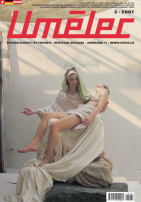















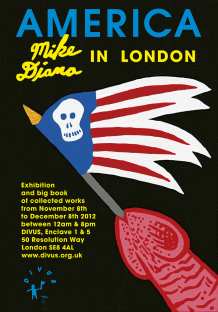




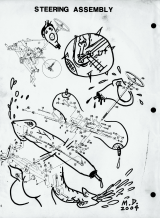

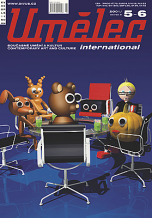
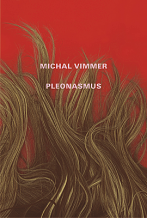


 We Are Rising National Gallery For You! Go to Kyjov by Krásná Lípa no.37.
We Are Rising National Gallery For You! Go to Kyjov by Krásná Lípa no.37.
Комментарии
Статья не была прокомментированаДобавить новый комментарий